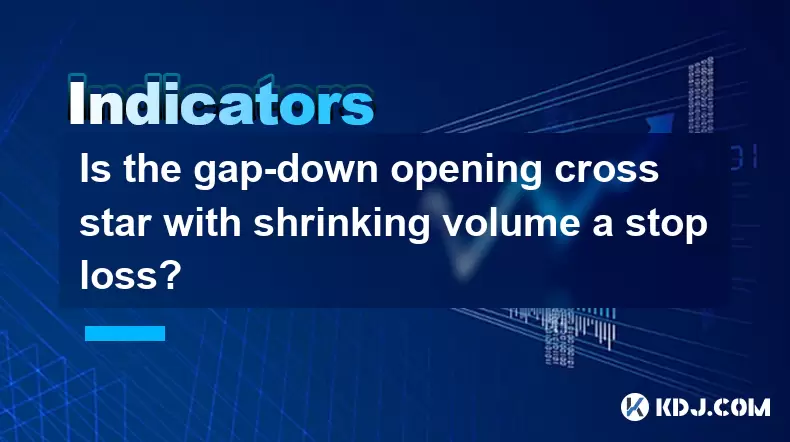-
 Bitcoin
Bitcoin $108,092.5658
-0.99% -
 Ethereum
Ethereum $2,546.4530
-1.12% -
 Tether USDt
Tether USDt $1.0000
0.01% -
 XRP
XRP $2.2676
0.12% -
 BNB
BNB $659.1616
-0.30% -
 Solana
Solana $148.8297
-1.97% -
 USDC
USDC $1.0000
0.02% -
 TRON
TRON $0.2874
-0.30% -
 Dogecoin
Dogecoin $0.1676
-3.64% -
 Cardano
Cardano $0.5765
-1.73% -
 Hyperliquid
Hyperliquid $37.2069
-6.18% -
 Bitcoin Cash
Bitcoin Cash $497.9918
-0.10% -
 Sui
Sui $2.8427
-2.26% -
 Chainlink
Chainlink $13.2689
-2.06% -
 UNUS SED LEO
UNUS SED LEO $9.0541
0.15% -
 Stellar
Stellar $0.2487
-0.92% -
 Avalanche
Avalanche $17.7710
-3.09% -
 Shiba Inu
Shiba Inu $0.0...01167
-1.28% -
 Toncoin
Toncoin $2.7488
-2.80% -
 Hedera
Hedera $0.1559
-2.28% -
 Litecoin
Litecoin $85.8945
-2.48% -
 Monero
Monero $316.0985
-2.09% -
 Dai
Dai $1.0001
0.02% -
 Polkadot
Polkadot $3.3481
-1.83% -
 Ethena USDe
Ethena USDe $1.0000
0.00% -
 Bitget Token
Bitget Token $4.2910
-3.04% -
 Uniswap
Uniswap $7.4131
-0.09% -
 Aave
Aave $280.9266
-2.67% -
 Pepe
Pepe $0.0...09816
-3.18% -
 Pi
Pi $0.4557
-2.29%
Is the gap-down opening cross star with shrinking volume a stop loss?
Jun 30, 2025 at 07:01 am

Understanding the Gap-Down Opening Cross Star Pattern
In technical analysis, candlestick patterns serve as critical tools for predicting price movements. One such pattern is the gap-down opening cross star, which often appears during volatile market conditions. This pattern typically consists of a candle that opens significantly lower than the previous day's close (a gap down), followed by a small-bodied candle that resembles a cross or doji. The presence of this formation may indicate indecision in the market and potential reversal signals.
The gap-down opening cross star occurs when the asset opens at a lower price than the prior session's close but fails to continue downward, instead fluctuating within a narrow range before closing near its opening price. This behavior suggests that sellers initially dominated the session but were met with enough buying pressure to neutralize their influence by the end of the period.
Important: The significance of this pattern increases when it appears after a sustained downtrend or in key support zones.
Volume Shrinkage: A Key Confirmation Signal
When analyzing the gap-down opening cross star, one should pay close attention to volume. A shrinking volume during the formation of this candle suggests waning selling pressure and a potential shift in momentum. If the decline in volume coincides with the appearance of the cross star, it could indicate that bears are losing control and bulls might soon take over.
However, shrinking volume alone does not confirm a reversal. It must be interpreted alongside other indicators and price action. For instance, if the cross star forms at a historically significant support level and is accompanied by decreasing volume, traders may interpret it as a sign of exhaustion among sellers.
- Step 1: Identify the presence of a gap-down opening.
- Step 2: Confirm the formation of a cross star or doji candle.
- Step 3: Examine the volume chart to assess whether volume has decreased compared to recent sessions.
- Step 4: Evaluate nearby support or resistance levels to determine context.
Is This Pattern a Stop Loss Trigger?
A common question among traders is whether the gap-down opening cross star with shrinking volume serves as a stop loss signal. In many cases, this pattern is not a direct trigger for stopping out positions but rather an early warning sign of possible trend weakness.
Traders who rely on technical setups often use this pattern to reassess their open trades. If a trader is holding a long position and observes a strong bearish continuation pattern following the cross star, they may consider adjusting their stop loss accordingly. However, the cross star itself is not a stop loss mechanism unless used within a broader trading strategy that defines specific exit rules based on candlestick formations.
It’s crucial to distinguish between a confirmation signal and a stop loss trigger. While the cross star can suggest a change in sentiment, it does not inherently require immediate action unless supported by further confirmation such as a breakout or breakdown.
How to Interpret This Pattern in Cryptocurrency Markets
Cryptocurrency markets are known for their high volatility and rapid price swings, making candlestick patterns like the gap-down opening cross star more frequent and potentially more impactful. Due to the absence of fixed market hours and the presence of global participants, crypto assets often experience gaps more frequently than traditional equities.
In crypto charts, especially those of major coins like Bitcoin or Ethereum, this pattern may appear during periods of panic selling or sudden regulatory news. Traders observing this formation should look for subsequent candles to confirm any reversal or continuation.
For example:
- If the next candle closes above the high of the cross star, it could suggest bullish strength.
- If the next candle breaks below the low of the cross star, it may confirm continued bearish momentum.
Therefore, the gap-down opening cross star with shrinking volume should not be viewed in isolation but as part of a larger analytical framework that includes moving averages, RSI, and support/resistance levels.
Common Misinterpretations and How to Avoid Them
One of the most common mistakes traders make is assuming that the gap-down opening cross star with shrinking volume always indicates a reversal. This is not necessarily true. The pattern may appear mid-trend and simply represent a temporary pause before the trend resumes.
Another misinterpretation involves ignoring the importance of context. A cross star appearing during a strong uptrend may carry different implications than one appearing after a prolonged downtrend. Therefore, contextual awareness is essential when interpreting this pattern.
Additionally, many novice traders act impulsively upon seeing this setup without waiting for confirmation. To avoid false signals:
- Always wait for the next candle to confirm the direction.
- Use volume as a secondary filter to validate the pattern’s strength.
- Incorporate additional technical tools like Fibonacci retracements or Bollinger Bands for better accuracy.
Frequently Asked Questions
What is the difference between a cross star and a doji?
While both the cross star and doji represent market indecision, a cross star typically has slightly longer upper and lower shadows compared to a classic doji, which usually has nearly equal-length shadows and a very small body. In practice, they are often interpreted similarly.
Can I trade this pattern on all timeframes?
Yes, the gap-down opening cross star can appear on all timeframes. However, higher timeframes like the 4-hour or daily chart tend to provide more reliable signals due to reduced noise and increased volume reliability.
Should I combine this pattern with fundamental analysis?
Absolutely. Especially in cryptocurrency trading, where news events can dramatically affect prices, combining technical setups like the gap-down opening cross star with fundamental insights helps improve decision-making accuracy.
Does this pattern work equally well across all cryptocurrencies?
No. Some altcoins with lower liquidity may produce misleading candlestick patterns due to erratic volume spikes. Stick to major cryptocurrencies like BTC, ETH, or SOL for more consistent results when applying this pattern.
Clause de non-responsabilité:info@kdj.com
Les informations fournies ne constituent pas des conseils commerciaux. kdj.com n’assume aucune responsabilité pour les investissements effectués sur la base des informations fournies dans cet article. Les crypto-monnaies sont très volatiles et il est fortement recommandé d’investir avec prudence après une recherche approfondie!
Si vous pensez que le contenu utilisé sur ce site Web porte atteinte à vos droits d’auteur, veuillez nous contacter immédiatement (info@kdj.com) et nous le supprimerons dans les plus brefs délais.
-
 ICNT Échangez maintenant
ICNT Échangez maintenant$0.3182
30.31%
-
 M Échangez maintenant
M Échangez maintenant$0.2011
23.43%
-
 SOLO Échangez maintenant
SOLO Échangez maintenant$0.3788
17.55%
-
 HSK Échangez maintenant
HSK Échangez maintenant$0.7010
17.49%
-
 SHX Échangez maintenant
SHX Échangez maintenant$0.0116
15.42%
-
 COREUM Échangez maintenant
COREUM Échangez maintenant$0.1392
8.59%
- Bitcoin Solaris Market Launch: A New Dawn or Just Another Altcoin?
- 2025-07-08 20:30:12
- Bitcoin, Memecoin Mania, and the All-Time High Hunt: What's Next?
- 2025-07-08 20:30:12
- Byrq Coin: Scam or Savior? A Deep Dive Review
- 2025-07-08 20:50:12
- Shiba Inu's Burn Rate Bonanza: Can Crypto Burns Ignite a Price Rally?
- 2025-07-08 20:50:12
- Telekom, injectif et validateurs: une plongée profonde dans la sécurité et la croissance du réseau
- 2025-07-08 21:10:12
- ROM: Golden Age - un demi-million de pré-registrations et un butin crypto!
- 2025-07-08 21:15:12
Connaissances connexes

How to trade Dogecoin based on funding rates and open interest
Jul 07,2025 at 02:49am
<h3>Understanding Funding Rates in Dogecoin Trading</h3><p>Funding rates are periodic payments made to either long or short traders ...

What is the 'God Mode' indicator for Dogecoin
Jul 07,2025 at 04:42pm
<h3>Understanding the 'God Mode' Indicator</h3><p>The 'God Mode' indicator is a term that has emerged within cryptocurrency trading ...

Using Gann Fans on the Dogecoin price chart
Jul 07,2025 at 09:43pm
<h3>Understanding Gann Fans and Their Relevance in Cryptocurrency Trading</h3><p>Gann Fans are a technical analysis tool developed b...

How to spot manipulation on the Dogecoin chart
Jul 06,2025 at 12:35pm
<h3>Understanding the Basics of Chart Manipulation</h3><p>Chart manipulation in the cryptocurrency space, particularly with Dogecoin...

Dogecoin market structure break explained
Jul 07,2025 at 02:51am
<h3>Understanding the Dogecoin Market Structure</h3><p>Dogecoin, initially created as a meme-based cryptocurrency, has evolved into ...

How to backtest a Dogecoin moving average strategy
Jul 08,2025 at 04:50am
<h3>What is a Moving Average Strategy in Cryptocurrency Trading?</h3><p>A moving average strategy is one of the most commonly used t...

How to trade Dogecoin based on funding rates and open interest
Jul 07,2025 at 02:49am
<h3>Understanding Funding Rates in Dogecoin Trading</h3><p>Funding rates are periodic payments made to either long or short traders ...

What is the 'God Mode' indicator for Dogecoin
Jul 07,2025 at 04:42pm
<h3>Understanding the 'God Mode' Indicator</h3><p>The 'God Mode' indicator is a term that has emerged within cryptocurrency trading ...

Using Gann Fans on the Dogecoin price chart
Jul 07,2025 at 09:43pm
<h3>Understanding Gann Fans and Their Relevance in Cryptocurrency Trading</h3><p>Gann Fans are a technical analysis tool developed b...

How to spot manipulation on the Dogecoin chart
Jul 06,2025 at 12:35pm
<h3>Understanding the Basics of Chart Manipulation</h3><p>Chart manipulation in the cryptocurrency space, particularly with Dogecoin...

Dogecoin market structure break explained
Jul 07,2025 at 02:51am
<h3>Understanding the Dogecoin Market Structure</h3><p>Dogecoin, initially created as a meme-based cryptocurrency, has evolved into ...

How to backtest a Dogecoin moving average strategy
Jul 08,2025 at 04:50am
<h3>What is a Moving Average Strategy in Cryptocurrency Trading?</h3><p>A moving average strategy is one of the most commonly used t...
Voir tous les articles

























































































